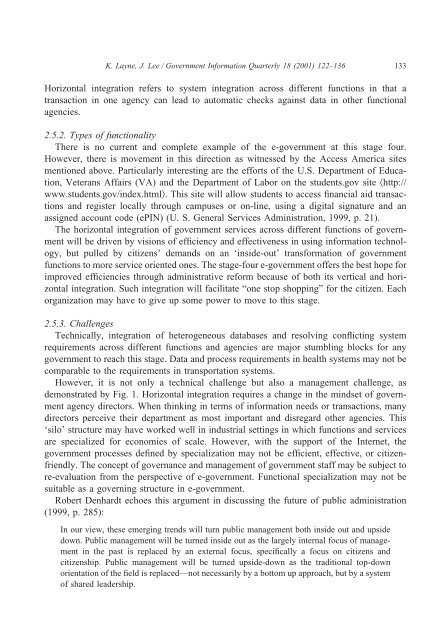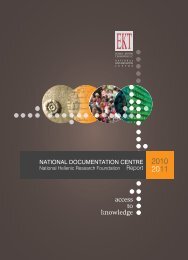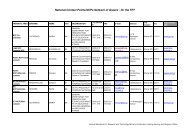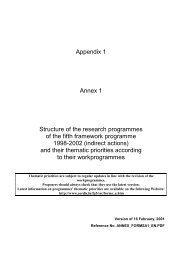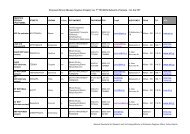Government Information Quarterly; 18 (2) 2001, p.122-36.pdf
Government Information Quarterly; 18 (2) 2001, p.122-36.pdf
Government Information Quarterly; 18 (2) 2001, p.122-36.pdf
- No tags were found...
Create successful ePaper yourself
Turn your PDF publications into a flip-book with our unique Google optimized e-Paper software.
K. Layne, J. Lee / <strong>Government</strong> <strong>Information</strong> <strong>Quarterly</strong> <strong>18</strong> (<strong>2001</strong>) 122–136133Horizontal integration refers to system integration across different functions in that atransaction in one agency can lead to automatic checks against data in other functionalagencies.2.5.2. Types of functionalityThere is no current and complete example of the e-government at this stage four.However, there is movement in this direction as witnessed by the Access America sitesmentioned above. Particularly interesting are the efforts of the U.S. Department of Education,Veterans Affairs (VA) and the Department of Labor on the students.gov site http://www.students.gov/index.html. This site will allow students to access financial aid transactionsand register locally through campuses or on-line, using a digital signature and anassigned account code (ePIN) (U. S. General Services Administration, 1999, p. 21).The horizontal integration of government services across different functions of governmentwill be driven by visions of efficiency and effectiveness in using information technology,but pulled by citizens’ demands on an ‘inside-out’ transformation of governmentfunctions to more service oriented ones. The stage-four e-government offers the best hope forimproved efficiencies through administrative reform because of both its vertical and horizontalintegration. Such integration will facilitate “one stop shopping” for the citizen. Eachorganization may have to give up some power to move to this stage.2.5.3. ChallengesTechnically, integration of heterogeneous databases and resolving conflicting systemrequirements across different functions and agencies are major stumbling blocks for anygovernment to reach this stage. Data and process requirements in health systems may not becomparable to the requirements in transportation systems.However, it is not only a technical challenge but also a management challenge, asdemonstrated by Fig. 1. Horizontal integration requires a change in the mindset of governmentagency directors. When thinking in terms of information needs or transactions, manydirectors perceive their department as most important and disregard other agencies. This‘silo’ structure may have worked well in industrial settings in which functions and servicesare specialized for economies of scale. However, with the support of the Internet, thegovernment processes defined by specialization may not be efficient, effective, or citizenfriendly.The concept of governance and management of government staff may be subject tore-evaluation from the perspective of e-government. Functional specialization may not besuitable as a governing structure in e-government.Robert Denhardt echoes this argument in discussing the future of public administration(1999, p. 285):In our view, these emerging trends will turn public management both inside out and upsidedown. Public management will be turned inside out as the largely internal focus of managementin the past is replaced by an external focus, specifically a focus on citizens andcitizenship. Public management will be turned upside-down as the traditional top-downorientation of the field is replaced—not necessarily by a bottom up approach, but by a systemof shared leadership.


